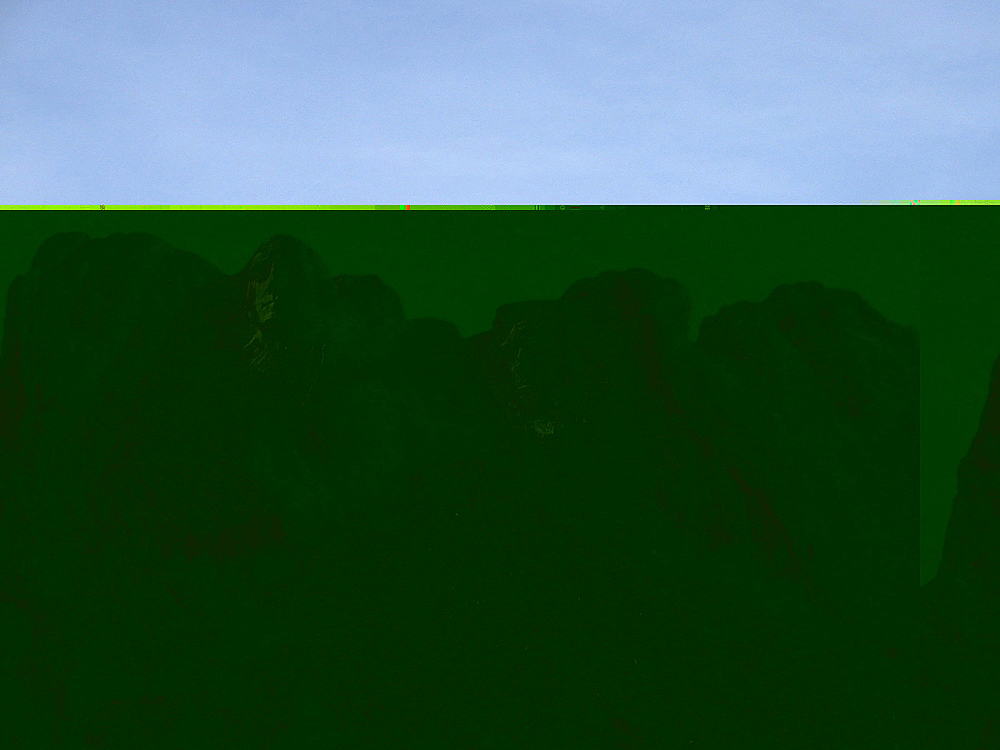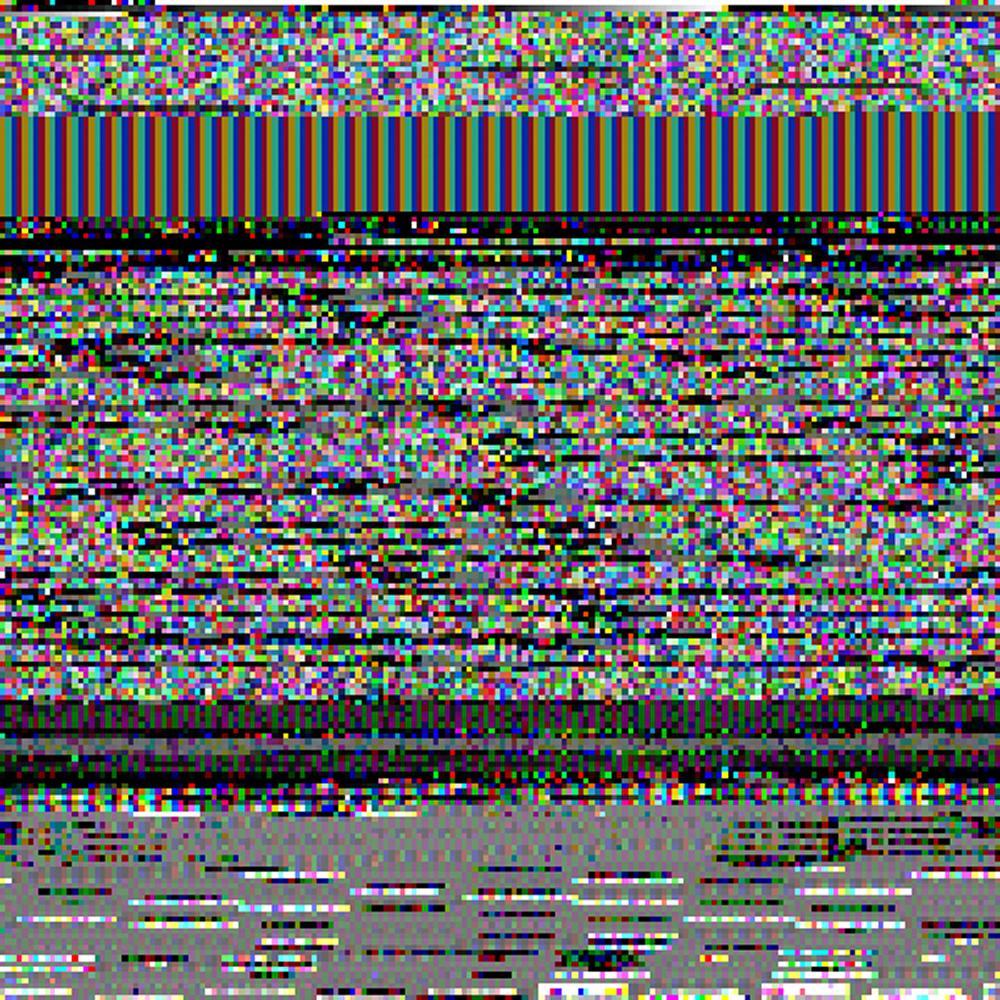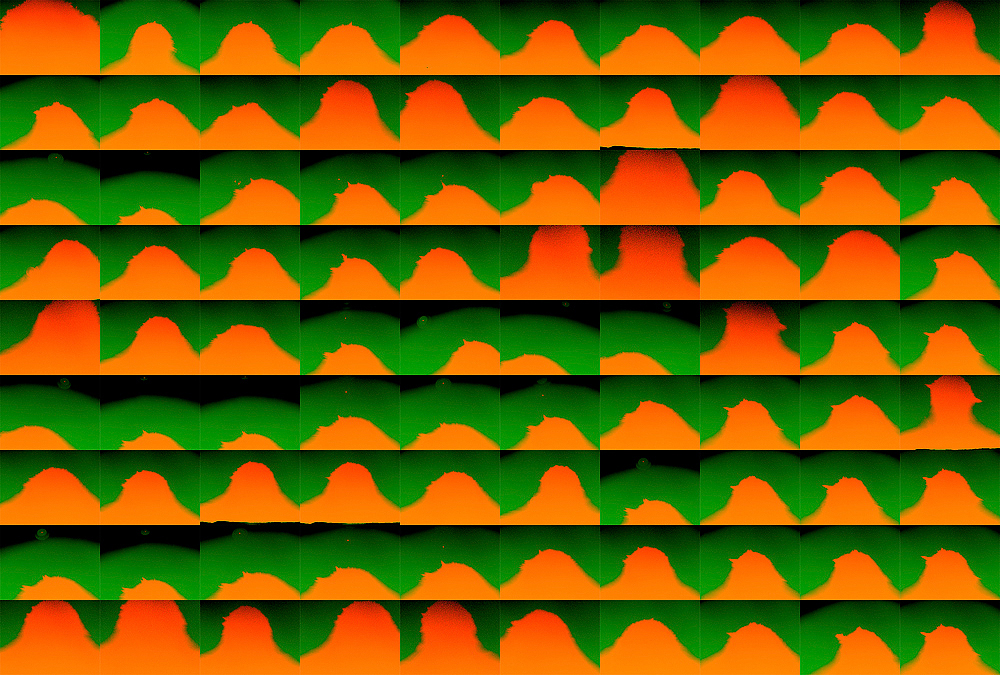Christopher Meerdo
(American, b. 1981; resides in Chicago, IL)
Partial to the evasive nature of photography, Christopher Meerdo utilizes photography, video, and installation to act as a mediator between memory and constructed reality. Through addressing political issues as well as confronting his own personal narratives, Meerdo creates visual representations of seemingly inaccessible information that examine perception, permanence, and entropy.
The Midwest Photographer’s Project holds prints from numerous bodies of work by Christopher Meerdo. In Memento Mori (1996) (2010), Meerdo uses aerial footage of treetops to construct a ten-channel video installation, recalling a near-death plane crash he was involved in as a teenager. Shot over a forest between two airports, the video serves as a stand-in for the crash site. The installation becomes an investigation for the event for which, curiously, no public records exist.
With Anthology I (2007-2015), Meerdo excavates erased data from memory cards he buys on the websites Craigslist and Ebay. He then restores and saves the lost data through a data recovery program, drawing attention to the idea that no digital data is ever truly erased. Through the recovery process, the resurrected images become fragmented juxtapositions of composition and hue. Further adding to the images’ newfound permanence, Meerdo printed a selection for Anthology I in a bound book, as if to archive them.
For Sine qua non (2012), Meerdo takes an opposite approach. Rather than restoring damaged photographs, he instead uses destruction as the process to create new images. Realizing the ephemeral disposition of digital technology, he spent the summer of 2011 using a camera manufactured in the 1990’s to photograph the sun thousands of times over. Through the process, the camera’s sensor eroded, leaving it incapable of photographing representational images and instead only able to record its own deterioration. Meerdo then printed these images in the order in which he took them, so that the viewer can see how the images change as the sensor erodes.
Continuing to explore how photography can aesthetically contextualize abstract information, Meerdo sources an encrypted 1.5 gigabyte file released for a short time on WikiLeaks, an anonymous activist website. Created by the site’s founder, Julian Assange, the file is intended to act as insurance in the event that Assange or WikiLeaks is ever jeopardized. Until Assange releases the encryption key, what is truly contained in the file, titled insurance.aes256, is ultimately unknown. Through data processing, Meerdo transforms the amorphous and essentially non-existent raw binary data of the file into a black and white image. He then prints the image in its entirety on an uninterrupted 100” x 350” piece of paper to show the scale of information included in the file, as well as inside handmade envelopes that recall patterns of security envelopes. Similarly, Chinga La Migra (Fuck the Border Patrol) (2011) sources 700 classified documents from the Arizona Border Patrol through teenage ‘hacktivist’ groups, whose intents include generating disorder on the Internet. Using the documents’ binary data, Meerdo converted the 1’s and 0’s into the RGB color spectrum–thereby exposing the documents through visual interpretation. Through creating corporeal visualizations through aesthetic interpretation, these two series both examine the idea of hidden data and the artist’s obsession with the unseen.
Spore (2011) derives the Internet’s tendancy to level the meaning of divergent imagery to create a composite image of explosions appropriated from a Google image search. Referencing microorganisms that can individually replicate on their own, the title of Spore becomes a metaphor for the self-replicating culture of the Internet. Lastly, in Stalemate (2010), Meerdo prints onto phosphorescent (glow-in-the-dark) paper a life-size, full-frontal image of a heavily battered M1A1 Abrams tank, the main tank used by the United States in ground warfare. Installed in a dark room, the image materializes as the viewer’s eyes adjust, creating a sense that the tank is slowly driving toward the viewer.
Christopher Meerdo completed a BFA in Photography at Northern Michigan University, Marquette, Michigan (2003) and an MFA in Photography from the University of Illinois at Chicago, Chicago, Illinois (2011). He has exhibited nationally and internationally in Reykjavik, New York, Seattle, and Chicago, among others. His installations have been exhibited in Toronto, Canada and Nottingham, England. His work is represented in the collections of Harper College Art Collection in Chicago, IL and the South Bend Regional Museum of Art in South Bend, IN. In 2012, Meerdo was selected as the resident artist for the SÍM Residency in Reykjavik, Iceland. He currently teaches photography at the School of the Art Institute Chicago.
https://christophermeerdo.com/




